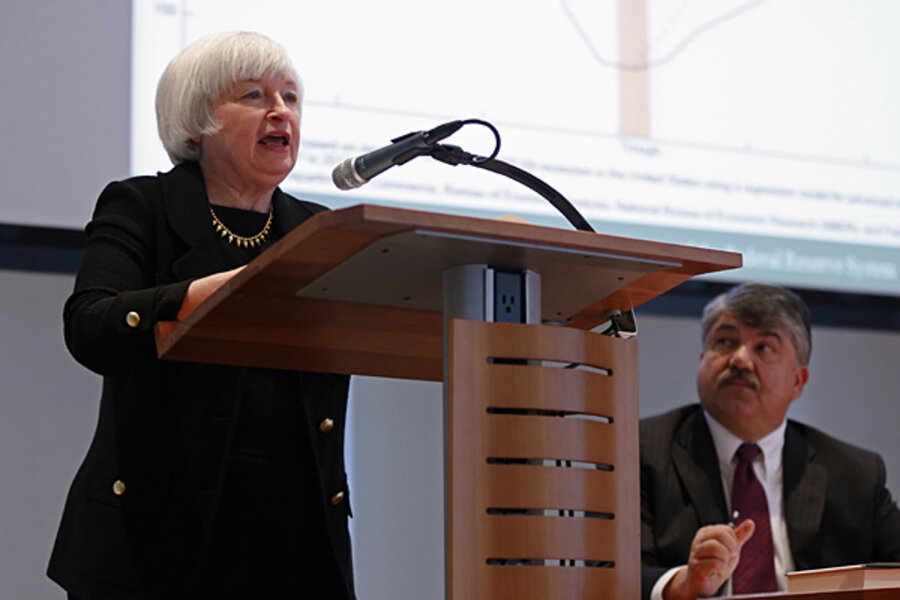Unlike many of her colleagues, Yellen proved prescient about a potential housing bubble and resulting financial crisis. Just as the recession was taking hold in December 2007, she warned at a Fed meeting in Washington that “The possibilities of a credit crunch developing and of the economy slipping into recession seem all too real,” and that the economy could begin to slow.
In a February 2013 speech at a macroeconomics conference in Washington, Yellen outlined three "economic tailwinds" that usually help the economy bounce back from recessions. Housing was among them. "Before the Great Recession, housing investment added an average of 1/2 percentage point to real GDP growth in the two years after each of the previous four recessions, considerably more than its contribution to growth at other times," Yellen said. "During this recovery, in contrast, residential investment, on net, has contributed very little to growth since the recession ended."
One reason for the sluggish recovery, critics say, is that while Yellen recognized the housing bubble, she (and many others) didn't realize how severely the bursting of that bubble would hit the financial system or the huge impact of household debt.
Since then, however, Yellen has called attention to the lag in the rebound in housing prices, especially for low- and moderate-income households where the bursting of the bubble was particularly severe.
"In light of this experience, it makes sense to think about the development of wealth-building vehicles for low- and moderate-income households that have some of the desirable qualities of homeownership as an investment, but perhaps have less of the risk," she said in a 2011 speech in Cleveland. "Such instruments should be simple and transparent and might include a savings commitment component."






